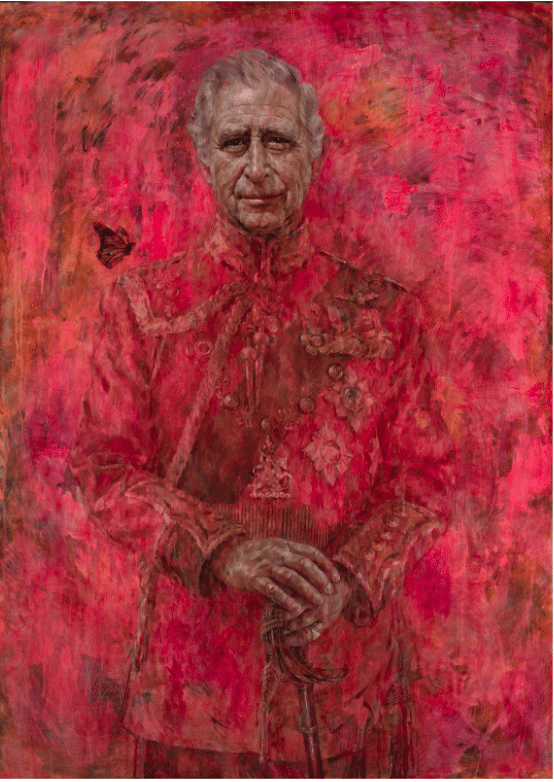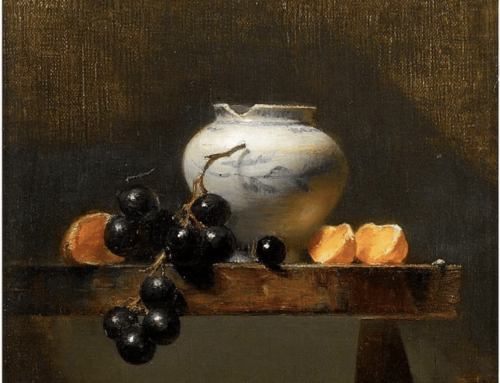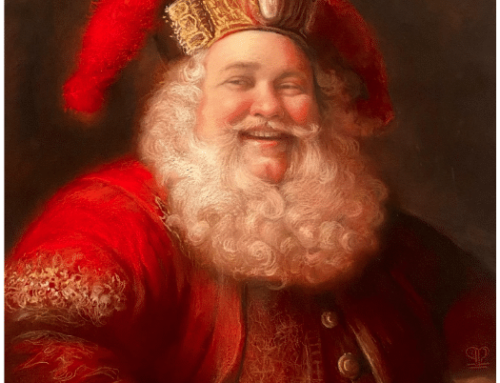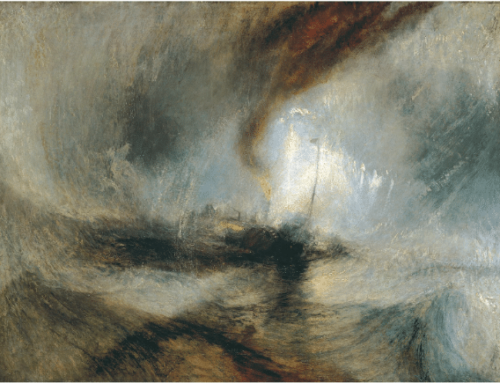Earlier this month, artist Jonathon Yeo ignited massive artworld controversy when his official portrait of King Charles III was unveiled at London’s Royal Palace on May 14.
Yeo shows King Charles shrouded in a bath of red with a monarch butterfly hovering over his right shoulder. Charles rests against a sword, wearing the bright red uniform of the Welsh guard. The Royal Family posted the unveiling of the portrait on their official Instagram page on May 14.
The critics have been divided: “Obsequious, oversized and unaccountably frightening” declared the Washington Post’s critic Sebastian Smee. The Guardian’s Jonathan Jones meanwhile slammed the “facile pseudo-portraiture with the cheery serotonin of random color,” Taking a contrarian stance, art historian Richard Morris has said that “I really like the portrait,” adding that Yeo creatively captured the king’s “flaws and mortality.”
Many on social media commented that the portrait looks “satanic,” “disturbing,” and “unsettling.” Some thought it bold, others saw, “Nothing regal or great. Just pure vulgarity.” Many commented that King Charles “looks like he’s in hell already,” and as many others remarked that all that red just made them think of blood.
“Blood, flames, and horror movies,” went a critical story on Vox.“the furor over the painting points to the Crown’s larger problems.”
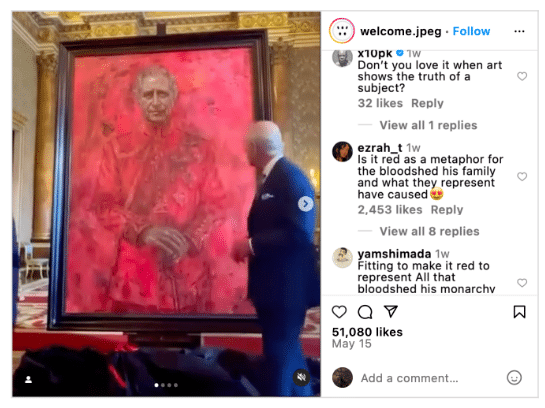
According to the BBC, members of the royal family have said they like it, and the artist got the impression Charles approved as well. “When I showed it to him back in November, when it was sort of three-quarters done… certainly the face was done, body was sketched and the color was mostly pretty much as it was, in the end,” the artist shared.
“If he’d been appalled, I think, I might have rethought it and toned it down a bit. But he didn’t seem that way.” Yeo previously told the BBC that Charles was “initially mildly surprised by the strong color but otherwise he seemed to be smiling approvingly.”
According to Yeo, “When [Camilla] looked at it and smiled straight away, I thought, ‘OK, phew! That’s the important one,” he told the Boston Globe earlier this month.
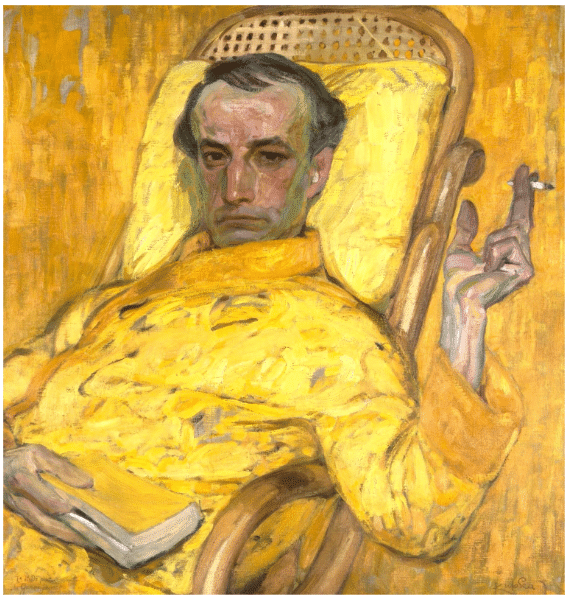
František Kupka, Yellow Scale (1907)
Some said the red painting reminded them of another color-saturated, semi-abstract portrait, František Kupka’s “Yellow Scale,” (above) painted in 1907, the year after Matisse painted “The Blue Nude (Memory of Biskra)” and four years before “The Red Studio.”
“Royal portraits in the past have had an important role to play in signifying power and projecting an image,” the BBC’s Katie Razzall writes. “They were part of the tools used to ensure the survival of the monarch.”
One of Yeo’s aims with the painting, which he began in 2021, was to underscore Charles’s essence as a person, how he’s changed as he’s taken on the role of king and the struggles he’s endured. “My interest is really in figuring out who someone is and trying to get that on a canvas,” Yeo told the BBC.
Yeo’s website describes the color scheme as injecting a “dynamic, contemporary jolt” to the work, differentiating it from past portraits.
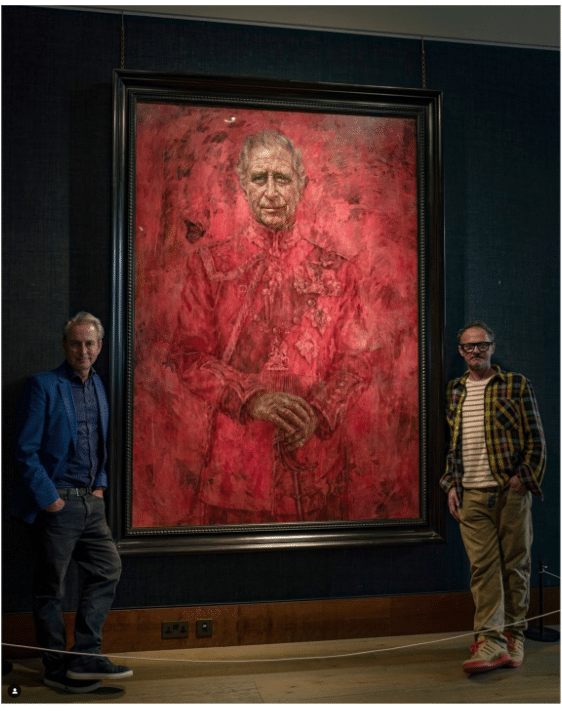
It’s no small matter! (John Yeo, the artist, is standing to the right).
Three weeks later, more admirers than detractors have stepped up to defend the painting online, although the majority of lay commentators and professional art critics alike appear to remain divided. Yeo, for his part, is enjoying the intense reaction to his vibrant royal portrait.
Some cooler heads are saying it’s sympathetic to Charles; he is seen for his personality emerging while his symbolic office, in the form of his red Welsh Guard uniform, fades into the background. “All you see are the face and hands of this old man, elderly but still dignified and intelligent,” commented one social media user. “That the colour of his uniform is red was incidental rather than the dominating purpose, and the artist has done pictures like this in the past.”
The same Reddit thread included the following: “A new royal portrait comes out pretty regularly and this is the most discourse one has generated by a significant margin. I think this is going to be the image of Chaz that endures and that will be fascinating.” To which a second poster added:
“It absolutely is. Even if the monarchy endures for centuries, people will look back at the history of royal portraits and say “wait what the (bleep) is up with that one?!”
For what it’s worth, art history has been made, much has been said for and against, and many a memorable meme has been minted.
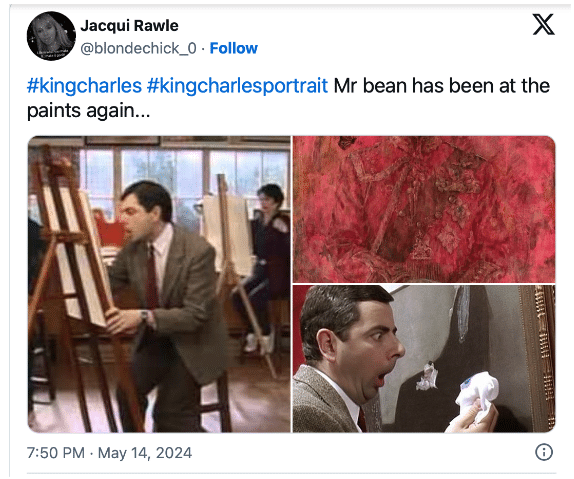
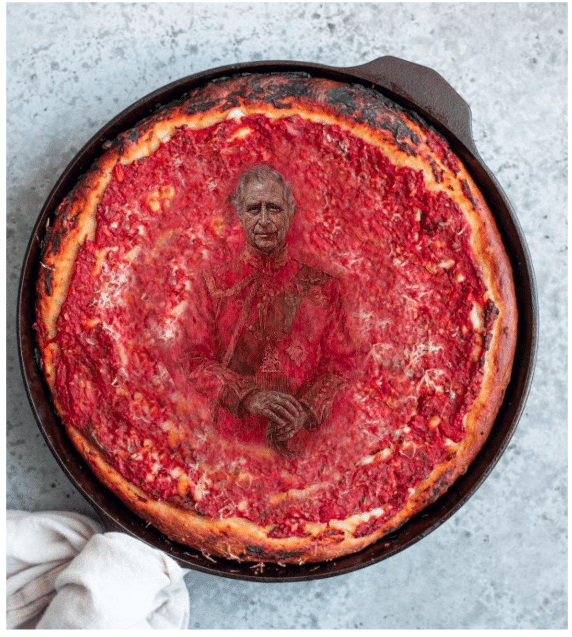
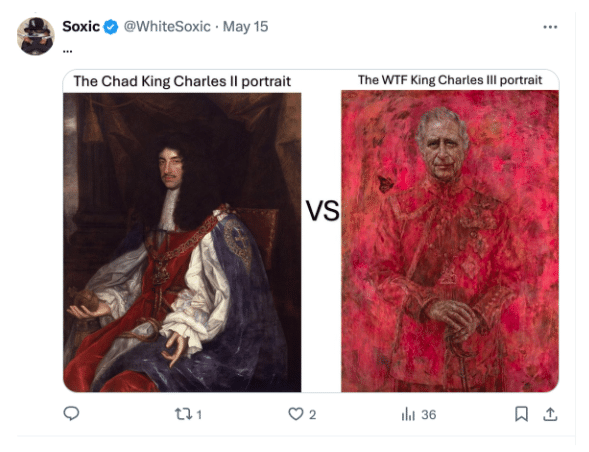
One more thing…
On a more serious technical note, one critic has the pointed to the viral portrait as merely the latest to make a splash in an emerging contemporary movement some are calling “disrupted realism.” Art critic John Seed, who coined the term, says it’s a style that combines realism with other elements that allow for improvisation and expression as it fuses representation and abstraction in unexpected ways. Read his take on Charles’ portrait here.
If portraiture fascinates you, have a peek at the many teaching videos available here.

